Tick remedies – which ones and how do they protect your four-legged friend?
And why is protection against parasites so important for our cuddly companions?
Pets are often cherished family members: they live with us, not only sharing our house and garden, but sometimes even our beds.
We let them get close to us!
Sometimes too close…
It can lead to the transmission of infectious diseases from cats to people.
The parasites that like to infect your four-legged friends include fleas, mites and ticks.
The risk they can pose is zoonoses.
Zoonoses (from ancient Greek ζῶον zōon “animal” and νόσος nósos “disease”) are infectious diseases that can be transmitted from animal to person and from person to animal.
Source: Wikipedia, https://de.wikipedia.org/wiki/Zoonose, as of March 20, 2020
Parasites can infect your animal, but also move from their animal host to us.
Important information about ticks in cats
Free roaming animals often become victims of ticks because they wander around where bloodsuckers lurk. When these little vampires hunt for hosts, they climb and wait until a victim walks past – in forests, undergrowth, bushes, gardens or long grass.

Ticks like warmth and moisture so be careful on rainy days in summer when they are particularly active!
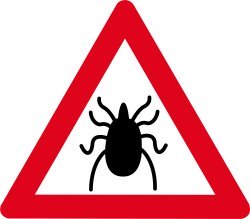
In Germany, cats are most often victim to coloured ticks, tortoise ticks or the brown dog tick, which does not, as its name suggests, just target dogs!
Biologically, ticks belong to the arachnid family.
They feed on the blood of mammals which they “tap” into for several days.
As soon as the small parasites have latched on, they move around with their victim – the host animal.
That’s why ticks occur most where host animals are in their natural habitat.
Correctly detect ticks in cats
When cats have caught a tick, you often can’t see it immediately.
Especially on cats with dark coloured fur where they are difficult to see!
These tiny bloodsuckers then go unnoticed and gorge themselves full of blood until they grow fat and fall off on their own.
This can take several days.
That’s why it’s important that you regularly check your cat for parasites.

Where do ticks bite cats?
Ticks prefer places that are easily accessible where they can suck blood undisturbed.
It’s particularly tricky for the host animal if affected areas are ones they cannot reach well. In cats, these are usually the skin on the head, neck or chest. Here it’s not so easy for our furry friends to defend themselves against ticks.
Can ticks be dangerous for cats?
These tiny bloodsuckers are not to be trifled with because, if they are infected, they can transmit diseases that are dangerous for humans and animals:
- Anaplasma infections
- Lyme disease
- TBE (early summer meningoencephalitis)
- Babesiosis
- Ehrlichiosis
Source: https://www.zecken-radar.de/zecken-krankheiten/, as of March 16, 2020

The good news is that cats don’t get this disease as often as dogs.
But the tick bite can have other consequences and become inflamed!
Or the tick can move to you when you’re petting your cat.
When and where are the greatest risks of ticks?
Birds are chirping, temperatures are rising – spring is just around the corner. ????
And the ticks are too! In forests, undergrowth, bushes, gardens or in long grass, they are out looking for victims.
The tick season starts in March, or April when temperatures reach double digits. It’s in full swing until autumn, depending on the weather, usually to September or October.
The right tick protection for cats
You especially need to protect free-roaming cats from ticks.
There is no vaccination for Lyme disease or similar infections for dogs and cats, but you can prevent tick infestation.
Should I protect them using chemical or natural remedies?
It depends on your cat.
Some cats are allergic to chemical tick treatments.
you are unsure, ask your vet:
s/he knows your cat and can recommend the right product.
The importance of regular checks
Check your cat’s fur regularly.
Especially when s/he has been outside for a long time. Do an extensive body search!
Also inspect areas that are not immediately obvious.
Combine this with stroking, so it becomes a feel-good moment that your furry friend enjoys and keeps still for.
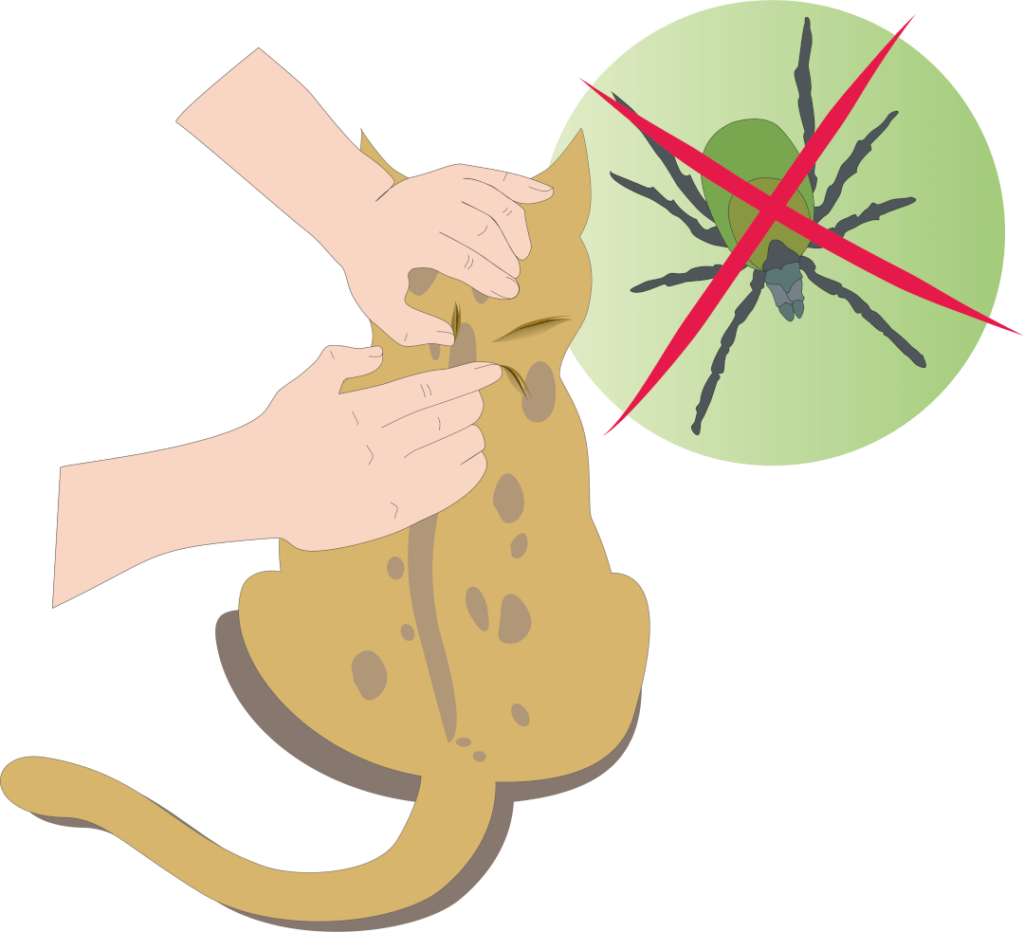
Spot-on prevention
As a preventative measure, you can also give your cat a spot-on remedy.
These solutions protect your furry friend from ticks and other parasites for a period of time.
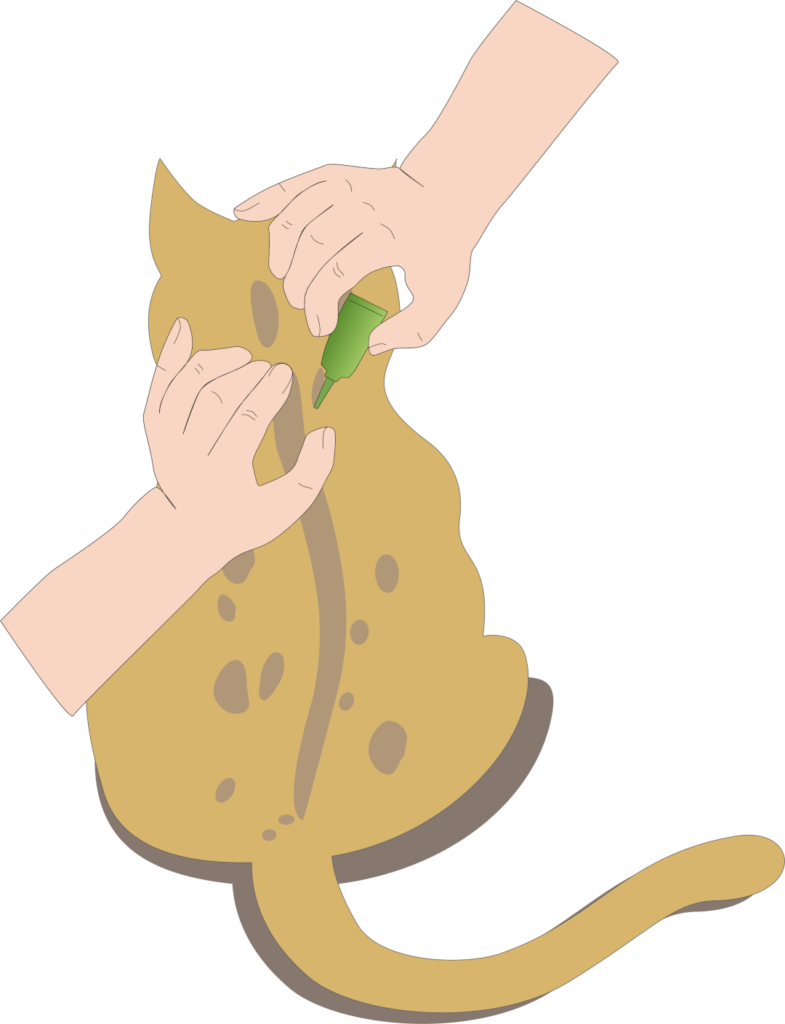
The liquid is applied directly to the skin, between the shoulder blades. A place where our four-legged felines cannot easily lick it off.
But beware:
Spot-on products contain substances that are only available in small doses, but can be dangerous for your cat!
Chips for cat collars
If your cat doesn’t mind wearing a collar, you can attach a chip to the collar.
The chip is made of metal with a special coating.
However, for free-roaming cats, don’t put on a collar that does not come off easily in an emergency. Accept the risk of the chip being lost.
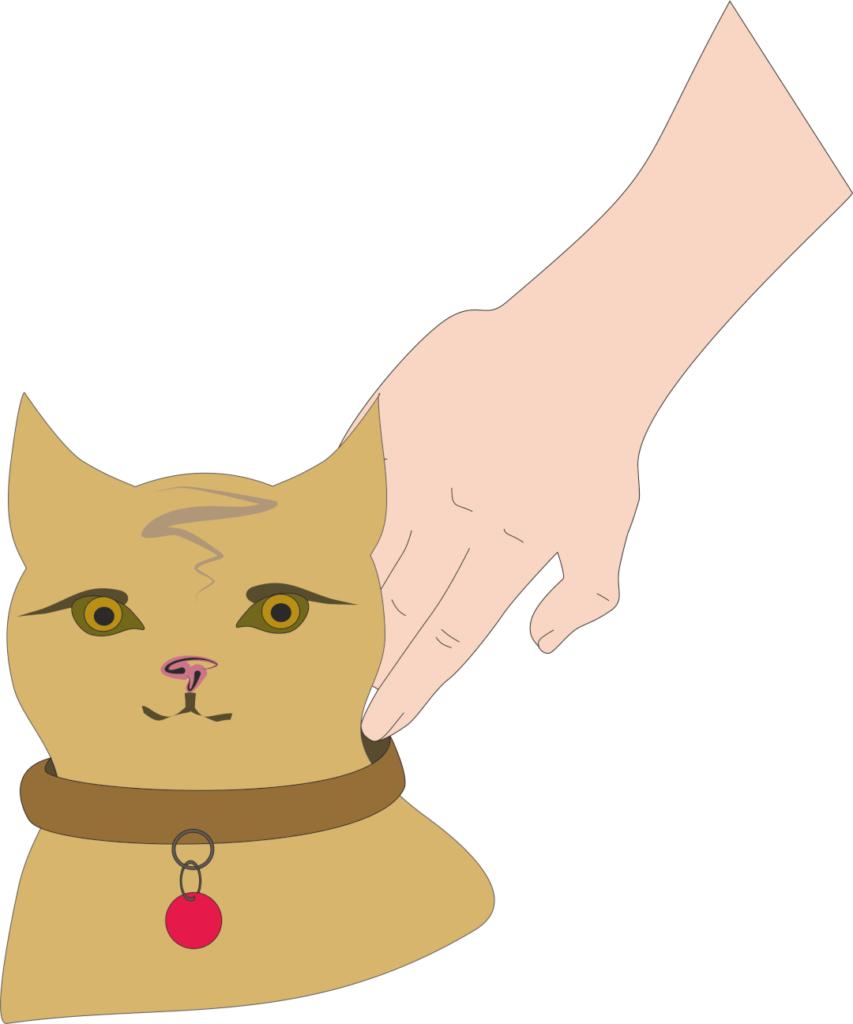
Tick repellent tablets for cats
With tablets, tick protection enters the body via the gastrointestinal tract.
However, many cats don’t like swallowing tablets. They actively avoid it!
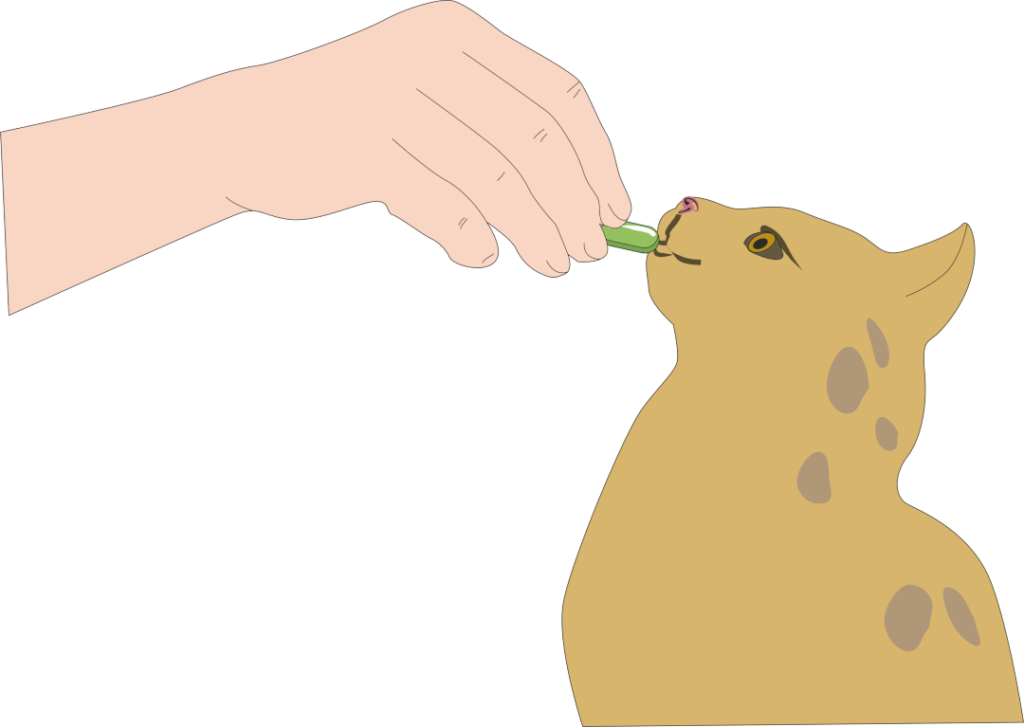
Hide a tablet in a favorite food. Then it’s usually swallowed in no time – and the tablet is gone!
Some felines are so clever that they eat the treats and leave the tablet. But there are also tablets that many like, such as brewer’s yeast tablets.
Tick home remedies that really help
Unfortunately, there are not many natural products that really protect against ticks and are not toxic for cats.
Cats are very sensitive to odours and don’t like having strong smelling treatments on their fur. Many oils are dangerous for our soft-pawed friends and are to be avoided.
One exception is natural coconut oil (preferably certified organic).
You can find out more about its uses and effects here:
https://tierarzt-beck.de/alternative-mittel-gegen-zecken
Source: https://tierarzt-beck.de/, as of March 18, 2020

Myths about tick protection for cats
There are a lot of myths and stories surrounding parasites – #tickfakenews e.g.
• Ticks bite
Strictly speaking ticks don’t bite but stab. First there is a small prick, which injects some anesthetic to keep the victim still, and then the proboscis is brought into position.
• Ticks are climbers
Ticks live on the forest floor, in undergrowth, bushes, gardens or long grass. They are only found on trees when a bird is their host animal.
• Ticks are best removed with varnish, oil or glue
These solutions are useless!
Take tweezers or tick hooks and remove the bloodsucker. Read about this here.

How to remove ticks from cats
If you discover a bloodsucker when you’re inspecting fur, you should remove it as soon as possible!
Be careful not to twist, press or squeeze the tick too much – just pull it out slowly and straight up!
Then check to see if you’ve got all of it. If there is still something left in, have a veterinarian remove it.
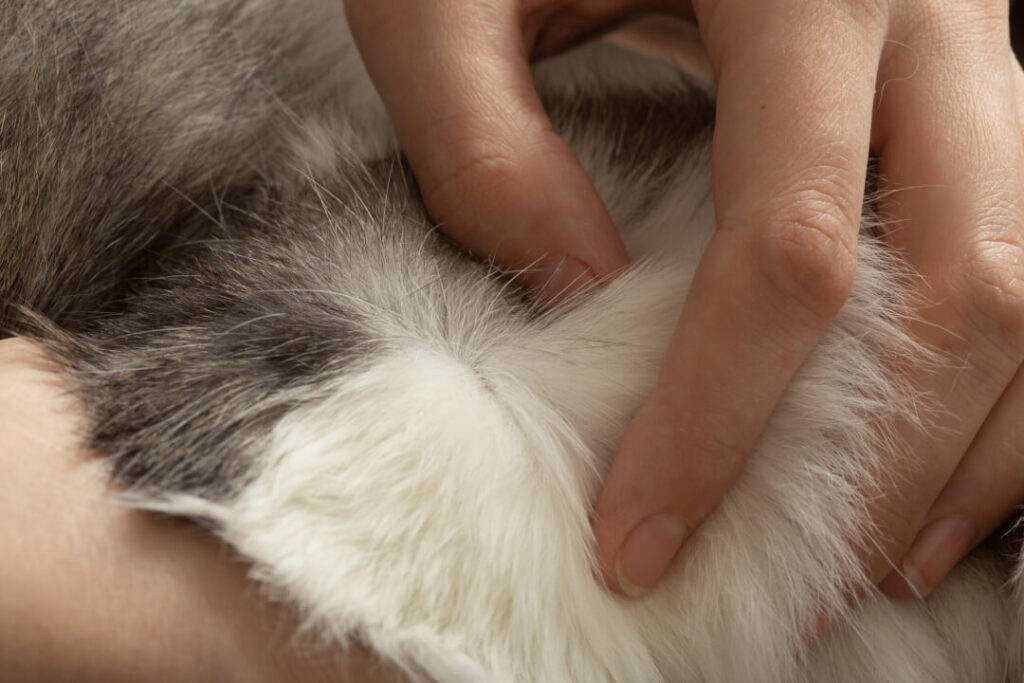
Tweezers and tick removers
Don’t touch ticks with your bare fingers!
Don’t squeeze them too much.
Or else even more pathogens will get into your cat.
It’s best to use the right “tick tool”: tick pliers or tick hooks.
If necessary, tweezers also work.
Zur Not tut es auch eine Pinzette.
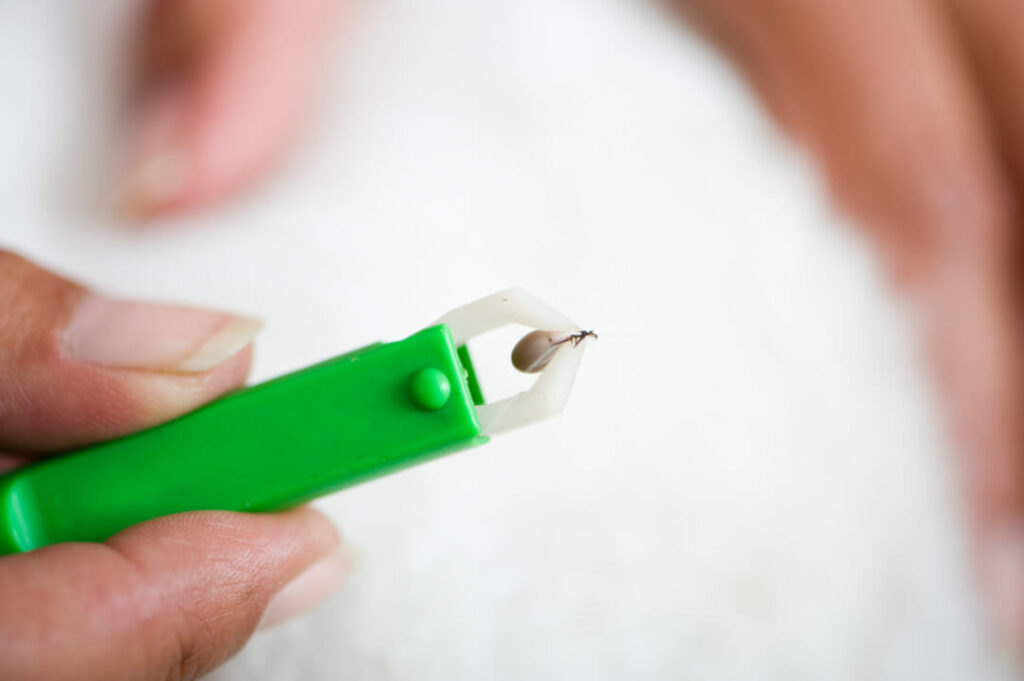
TIP: Here’s a review of the 11 best tick pliers, hooks and tweezers in 2020
TIP: Tick tools comparison 2020
Source: https://www.vergleich.org/, as of March 19, 2020
Calm your cat
Some cats stay still, as if they know you are trying to help them by getting rid of parasites. Others are more resistant.
Searching your cat’s body is one thing but when it comes to removing a tick, many cats try to wriggle free.
Calm your cat, talk gently to him or her and try to distract them.
Get help if s/he doesn’t want to be handled.

Carefully remove the tick
When everything is at hand – cat, tools, possibly a helper – you can start:
First expose the tick with your fingers.
Then use hook or tweezers as close to your cat’s body as possible and slowly and carefully pull the tick straight out
Make sure that the tick remains whole, nothing tears off, and no parts of the tick are left in the sore spot.
Continue to monitor the tick bite
Keep an eye on the wound for the next few days.
If the tick’s head or mouthparts get left in, they often fall off by themselves. If not, don’t hesitate to go to your vet.
S/he can remove any remaining part of the tick and also give your cat something to prevent possible inflammation.

